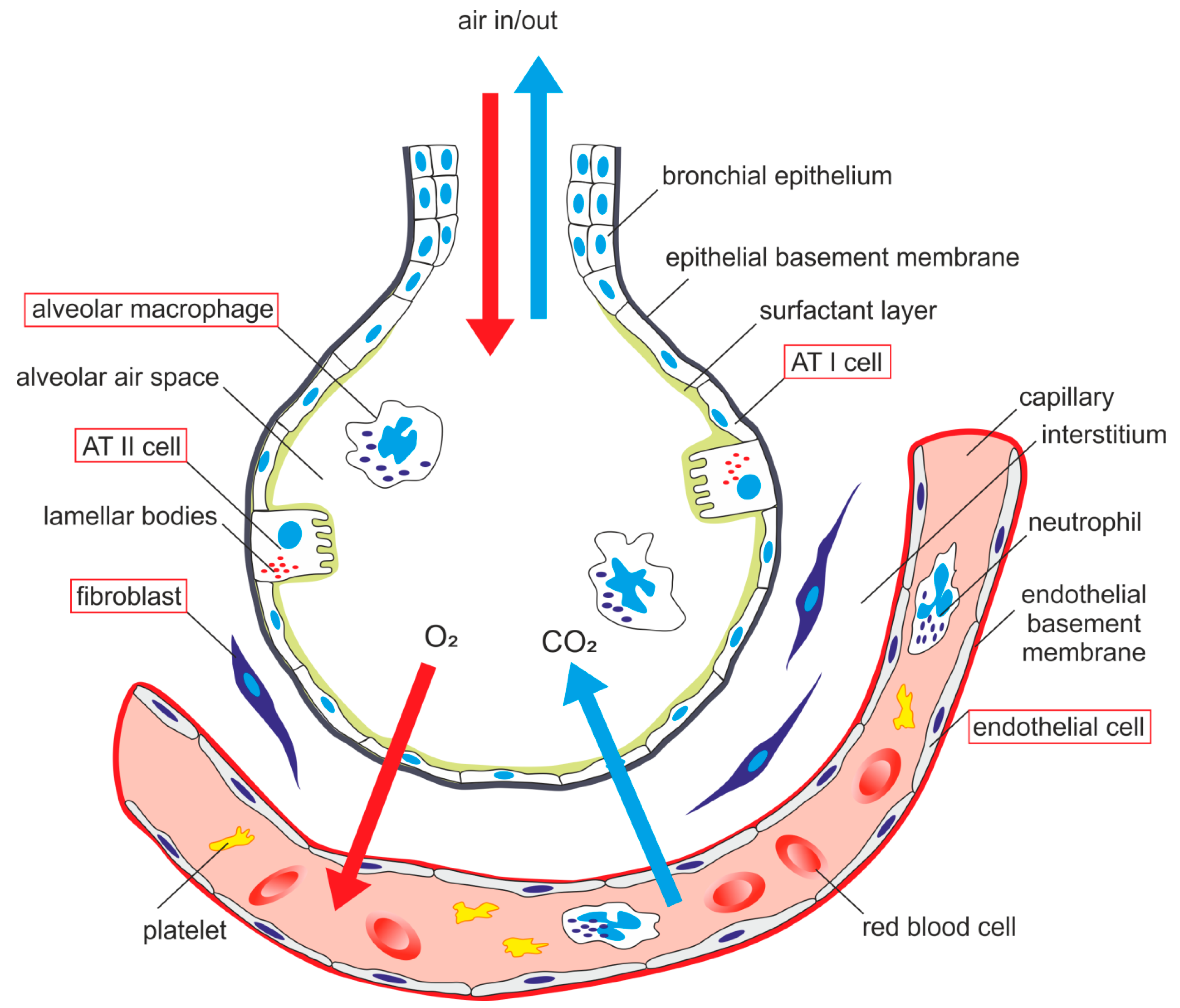
3D model systems including pulmonary cells
The human lung performs functions necessary for survival; such as gas exchange and a gatekeeper function; protecting our body from external hazards. Alveoli, the functional tissue of the lung comprises of type-1 cells, which together with endothelial capillaries, form the thin barrier for gas diffusion. The smaller, cuboidal type-2 cells secrets surfactant, other bioactive mediators and serves as pulmonary stem cells that differentiates in to Type-1 cells during post injury repair and regeneration (Wang Y., 2018).
The medical and socioeconomic need for reliable lung disease models
From zoonotic infections to lung cancer, severe lung disease is detrimental to basic bodily functions that consequently affect every day life. Lung disease is among the major causes of death worldwide. Thus there is both a medical and a social need for better understanding of the pulmonary system in both physiological and pathological states. At present there are in-vivo and ex-vivo models consisting of animal models, 2D and 3D pulmonary cell cultures respectively. 3D-models compared to the traditional 2D cell cultures closely recapitulate the cellular characteristics in human disease, yielding physiologically relevant, translatable data for pharmacological and toxicological studies.
Spheroid tumor models
Spheroid cell cultures are commonly produced using primary or immortalized cells cultured with or without a scaffold. Tumor models of lung cancer are currently a vital tool investigating, tumor growth, invasion and drug delivery. Majority of the lung tumor models employ spheroid culture systems that comprises of low attachment U-bottom plates, extracellular matrices (MatrigelTM), rotatory cell culture systems or the hanging drop method. These spheroid systems involving human lung adenocarcinoma cells (H3122, H2228 and H1975) effectively mimic the in vivo states of cancer cells, which in tern has been vital in investigating tumor-stromal interactions as well in testing drug efficacy (Ekert et al, 2014., Vinci et al, 2012., Zscheppang et al., 2018) .
References
- Yanjie Wang, Zan Tang, Huanwei Huang, Jiao Li, Zheng Wang, Yuanyuan Yu, Chengwei Zhang, Juan Li, Huaping Dai, Fengchao Wang, Tao Cai, Nan Tang. Pulmonary alveolar type I cell population consists of two distinct subtypes that differ in cell fate. Proceedings of the National Academy of Sciences Mar 2018, 115 (10) 2407-2412; DOI: 10.1073/pnas.1719474115
- Zscheppang K, Berg J, Hedtrich S, et al. Human Pulmonary 3D Models For Translational Research. Biotechnol J. 2018;13(1):1700341. doi:10.1002/biot.201700341
- Ekert JE, Johnson K, Strake B, et al. Three-dimensional lung tumor microenvironment modulates therapeutic compound responsiveness in vitro–implication for drug development. PLoS One. 2014;9(3):e92248. Published 2014 Mar 17. doi:10.1371/journal.pone.0092248
- Vinci M, Gowan S, Boxall F, Patterson L, Zimmermann M, Court W, Lomas C, Mendiola M, Hardisson D, Eccles SA. Advances in establishment and analysis of three-dimensional tumor spheroid-based functional assays for target validation and drug evaluation. BMC Biol. 2012 Mar 22;10:29. doi: 10.1186/1741-7007-10-29. PMID: 22439642; PMCID: PMC3349530.



